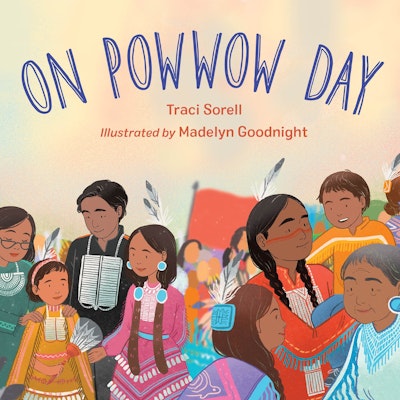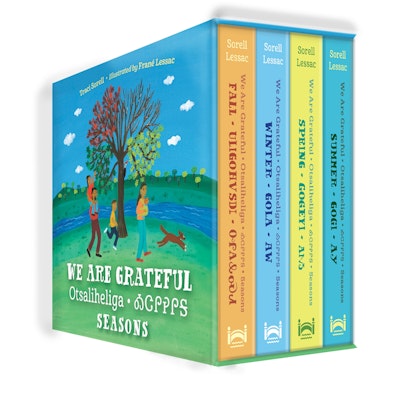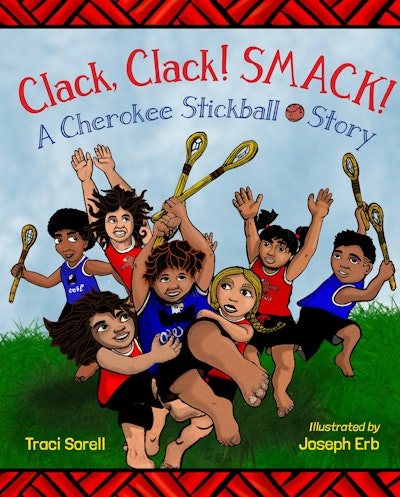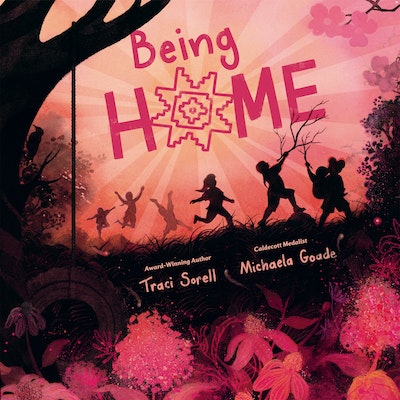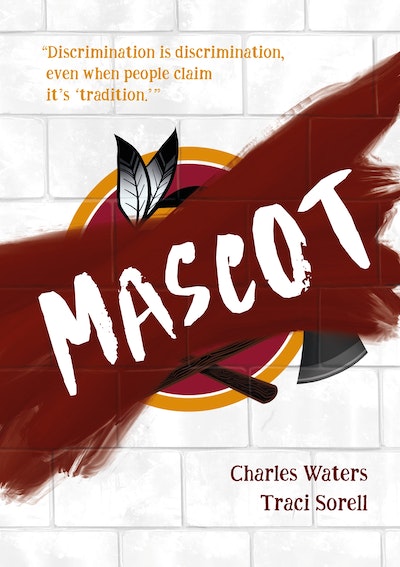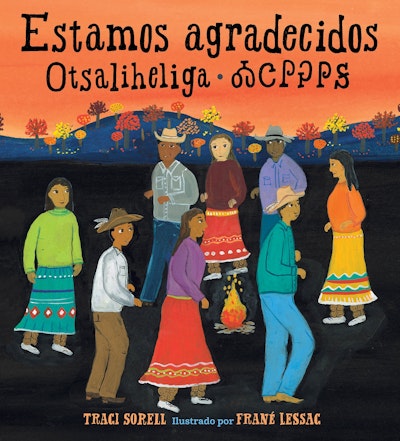- Published: 2 July 2021
- ISBN: 9781623541927
- Imprint: Charlesbridge Children
- Format: Hardback
- Pages: 40
- RRP: $39.99
We Are Still Here!
Native American Truths Everyone Should Know
- Published: 2 July 2021
- ISBN: 9781623541927
- Imprint: Charlesbridge Children
- Format: Hardback
- Pages: 40
- RRP: $39.99
Praise for We Are Grateful: Otsaliheliga
- Starred reviews from Kirkus Reviews, School Library Journal, Horn Book, and Shelf Awareness.
- 2019 Boston Globe-Horn Book Awards Honor Book; 2019 Sibert Honor Book; 2019 Orbis Pictus Honor Book; 2019 Notable Books for a Global Society; NPR's Guide to 2018's Great Reads; Kirkus Reviews Best Books of 2018; School Library Journal Best Books of 2018
Praise for We Are Grateful: Otsaliheliga
- Starred reviews from Kirkus Reviews, School Library Journal, Horn Book, and Shelf Awareness.
- 2019 Boston Globe-Horn Book Awards Honor Book; 2019 Sibert Honor Book; 2019 Orbis Pictus Honor Book; 2019 Notable Books for a Global Society; NPR's Guide to 2018's Great Reads; Kirkus Reviews Best Books of 2018; School Library Journal Best Books of 2018
♦ Students at the Native Nations Community School share presentations about the history, present, and future of Indigenous communities. The vivid artwork features a simple, bold style. The narrative starts with a general introduction of Native Nations in the United States. Each presentation contains illustrations with the student’s name, an overview of the subject, a brief list of the impact that the concept or historical moment had on Native American people, and the refrain “We Are Still Here!” The last pages show students and their families with a variety of skin tones and physical abilities studying the presentations on topics that include sovereign rights and relocation. Additional information, a time line, a glossary, sources, and an author’s note offer further context. The lyrical text and jewel-tone illustrations elegantly work together to stirringly portray the ongoing fight for Native American recognition and rights. VERDICT An essential purchase for introducing the impact laws and treaties had and continue to have on Native Nations. —School Library Journal, starred review ♦ In this meticulously researched nonfiction picture book, Sibert honorees Sorell and Lessac team up once again to answer this question: What has happened to Native Nations and their citizens after the treaties with the U.S. government ended in 1871? Lessac’s trademark colorful, folk-art–style illustrations show a Native American community school with a classroom of diverse students preparing for presentations at the Indigenous People’s Day assembly. Spread by spread, each child speaks, featured words and terms highlighting the journey Native Nations have taken to reclaim their land and rights. They show why Indigenous people say, “We are still here!” In the “Assimilation” presentation, Native children are dressed in militarylike uniforms, showing how U.S. leaders used schooling to destroy Native traditions. Dividing plots of tribal land for “Allottment” left much treaty land open for public sale. With “Termination” and “Relocation,” Native people were encouraged to leave their tribal lands and “act more like white people.” But Indigenous people say, “We are still here!” and the narrative arc turns to emphasize resilience. When activists speak up and organize, it strengthens tribal sovereignty. The tribes “protect and provide for future generations” by holding on to their traditional ceremonies, opening businesses to support their tribal members, and reviving their tribal languages. The illustrations, too, change their tenor, modulating from historical wrongs to emphasize contemporary strength, community, and joy. An emphatic, triumphant declaration: “WE ARE STILL HERE!” —Kirkus Reviews, starred review ♦ The creators of We Are Grateful: Otsaliheliga (2018) here share important Native American concepts for younger readers. Using a framework of students giving presentations for an Indigenous Peoples’ Day celebration, Sorell and Lessac devote a two-page spread to each report topic: “Assimilation,” “Allotment,” “The Indian New Deal,” “Termination,” “Relocation,” “Tribal Activism,” “Self-Determination,” “Indian Child Welfare and Education,” “Economic Development,” “Language Revival,” and “Sovereign Resurgence.” For each, they define, offer examples of its use (often to the disadvantage of Indigenous peoples), and conclude with the refrain “We are still here!” “Allotment,” for example, explains how the U.S. government passed laws that assigned small sections of land to tribal citizens and sold the “leftover” land to white Americans and the railroads; &



